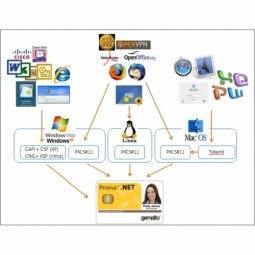公司规模
Large Corporate
地区
- Europe
国家
- Germany
产品
- Cray® XC30
- DDN® SFA®12K-40
- Lustre®
- DDN’s GRIDScaler®
- IBM® GPFS
技术栈
- High-Performance Computing
- Distributed Computing
- Data Storage
- Parallel File Systems
- Big Data Analytics
实施规模
- Enterprise-wide Deployment
影响指标
- Productivity Improvements
- Innovation Output
- Cost Savings
技术
- 基础设施即服务 (IaaS) - 云计算
- 基础设施即服务 (IaaS) - 云存储服务
适用行业
- 教育
- 生命科学
适用功能
- 离散制造
- 产品研发
- 质量保证
用例
- 预测性维护
- 过程控制与优化
- 边缘计算与边缘智能
服务
- 云规划/设计/实施服务
- 数据科学服务
- 系统集成
关于客户
北德超级计算联盟 (HLRN) 是北德七个州科学家的合作项目,提供最先进的存储和计算资源,以加速各个领域的科学突破。该联盟成立于 2001 年,目前支持来自柏林、勃兰登堡、不来梅、汉堡、梅克伦堡-前波莫瑞州、下萨克森州和石勒苏益格-荷尔斯泰因州的科学家和研究人员。这些科学家中的许多人来自北德大学和其他科研机构,他们结合了各自州和德国联邦政府的资源和资金,创建了一个强大的分布式超级计算机系统。该系统由柏林 Zuse 研究所 (ZIB) 和汉诺威莱布尼茨大学高性能计算中心 (RRZN) 的专家团队运营。
挑战
北德超级计算联盟 (HLRN) 为北德七个州的科学家提供最先进的存储和计算资源,以加速物理、化学、流体动力学、工程和环境领域的科学突破。这些科学家中的许多人来自北德大学和其他科研机构,他们整合了各自州和德国联邦政府的资源和资金,创建了一个强大的分布式超级计算机系统。HLRN 推动先进科学研究的能力需要最高水平的计算能力以及高带宽存储容量。鉴于该研究所支持的数据密集型应用范围广泛,HLRN 寻求一种大数据解决方案,该解决方案可以显著提高存储容量,同时根据需要扩展带宽和性能。HLRN 还需要确保可以从不同的地理位置轻松访问数据。
解决方案
HLRN 寻求计算能力和存储容量之间的理想平衡,同时匹配带宽,以便以分布式方式快速可靠地访问磁盘上的所有数据。因此,该团队纳入了一个基准来衡量计算和存储资源的 I/O 性能,如带宽和计量数据性能。在衡量 I/O 性能的结果时,该团队确定 DataDirect Networks (DDN) 与 Cray Inc. 合作提供的高性能存储将为联盟的千万亿级超级计算机环境提供最佳基础。HLRN 与 Cray 和 DDN 合作,设计和部署了一个分布式超级计算系统,该系统基于 Cray XC30 和 DDN 的 SFA12K-40(带 Lustre)以及 DDN 的 GRIDScaler 文件系统设备(带 IBM 通用并行文件系统 (GPFS)),用于处理计算密集型工作负载的“工作”文件系统。此外,HLRN 利用其 DDN 系统支持 GPFS 作为“家庭”存储,科学家可以在其中存储他们的程序和最重要的数据。
运营影响
数量效益

Case Study missing?
Start adding your own!
Register with your work email and create a new case study profile for your business.
相关案例.

Case Study
Corporate Identity Solution Adds Convenience to Beckman Coulter
Beckman Coulter wanted to implement a single factor solution for physical and remote logical access to corporate network. Bechman Coulter's users were carrying smart card badges for doors, but also needed a one-time password token to access to our corporate network when they were not in the office. They wanted to simplify the process.

Case Study
Revolutionizing Medical Training in India: GSL Smart Lab and the LAP Mentor
The GSL SMART Lab, a collective effort of the GSL College of Medicine and the GSL College of Nursing and Health Science, was facing a challenge in providing superior training to healthcare professionals. As clinical medicine was becoming more focused on patient safety and quality of care, the need for medical simulation to bridge the educational gap between the classroom and the clinical environment was becoming increasingly apparent. Dr. Sandeep Ganni, the director of the GSL SMART Lab, envisioned a world-class surgical and medical training center where physicians and healthcare professionals could learn skills through simulation training. He was looking for different simulators for different specialties to provide both basic and advanced simulation training. For laparoscopic surgery, he was interested in a high fidelity simulator that could provide basic surgical and suturing skills training for international accreditation as well as specific hands-on training in complex laparoscopic procedures for practicing physicians in India.

Case Study
IoT platform Enables Safety Solutions for U.S. School Districts
Designed to alert drivers when schoolchildren are present, especially in low-visibility conditions, school-zone flasher signals are typically updated manually at each school. The switching is based on the school calendar and manually changed when an unexpected early dismissal occurs, as in the case of a weather-event altering the normal schedule. The process to reprogram the flashers requires a significant effort by school district personnel to implement due to the large number of warning flashers installed across an entire school district.

Case Study
Embracing Business Success in Real Time
· Increase control over growing Big Data to improve business decisions · Manage data for 28,000 biotechnology stockkeeping units in the fields of microbiology, molecular biology, animal cell cultures, plant tissue cultures, and lab ware for laboratory chemicals · Accelerate report generation and analysis with real-time data

Case Study
Implementing Robotic Surgery Training Simulator for Enhanced Surgical Proficiency
Fundacio Puigvert, a leading European medical center specializing in Urology, Nephrology, and Andrology, faced a significant challenge in training its surgical residents. The institution recognized the need for a more standardized and comprehensive training curriculum, particularly in the area of robotic surgery. The challenge was underscored by two independent studies showing that less than 5% of residents in Italian and German residency programs could perform major or complex procedures by the end of their residency. The institution sought to establish a virtual reality simulation lab that would include endourological, laparoscopic, and robotic platforms. However, they needed a simulator that could replicate both the hardware and software of the robotic Da Vinci console used in the operating room, without being connected to the actual physical console. They also required a system that could provide both basic and advanced simulation training, and a metrics system to assess the proficiency of the trainees before they performed surgical procedures in the operating theater.

Case Study
Edinburgh Napier University streamlines long-distance learning with Cisco WebEX
• Geographically dispersed campus made in-person meetings costly and inconvenient.• Distance-learning programs in Malaysia, India, and China required dependable, user-friendly online tools to maximize interaction in collaborative workspaces.• Virtual learning environment required a separate sign-in process, resulting in a significant administrative burden for IT staff and limited adoption of collaboration technology.







